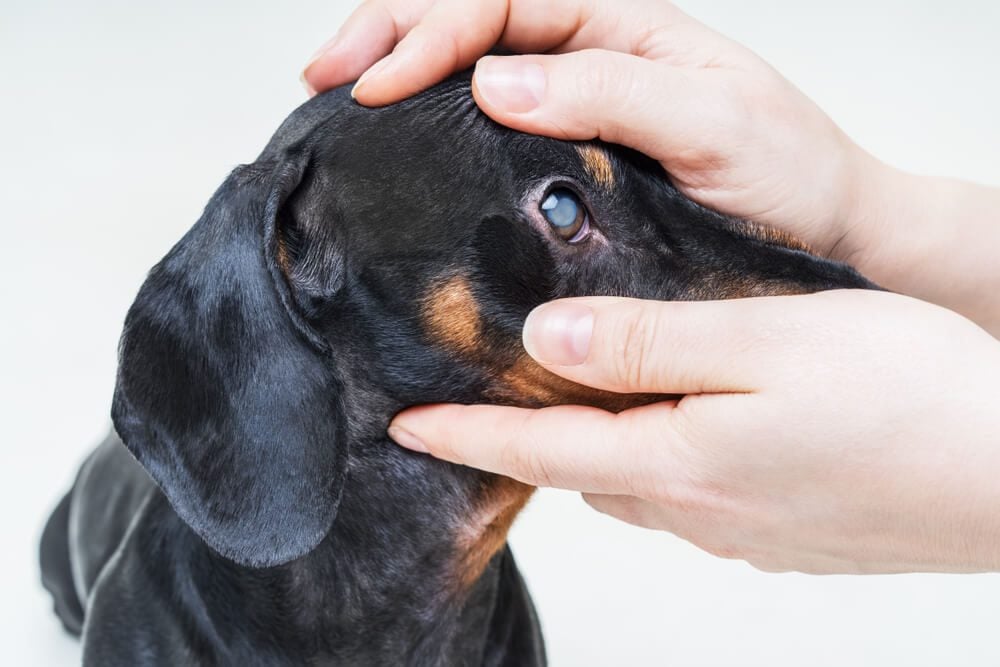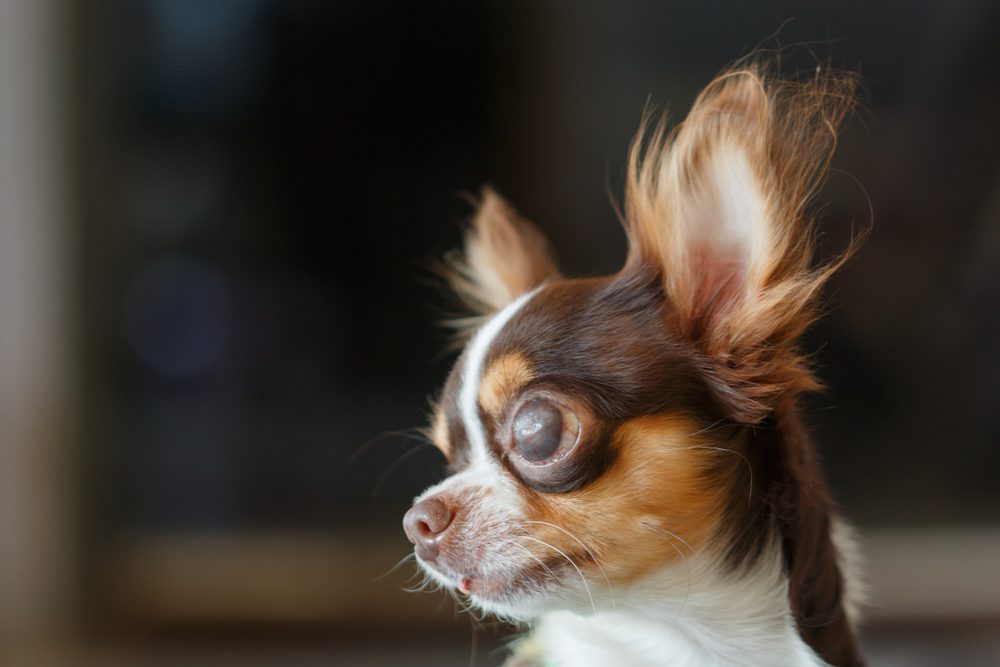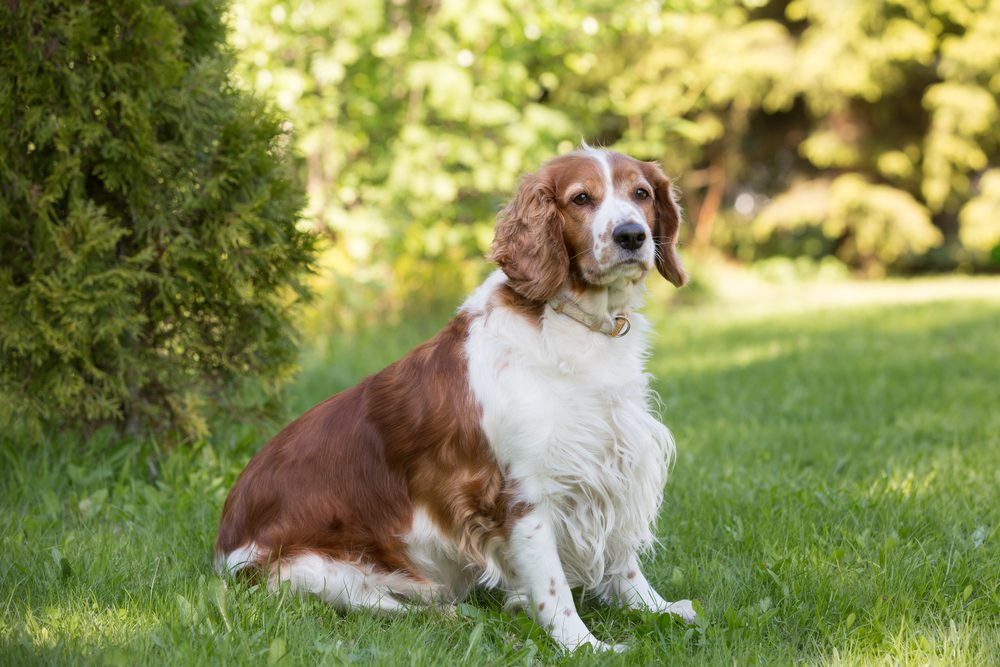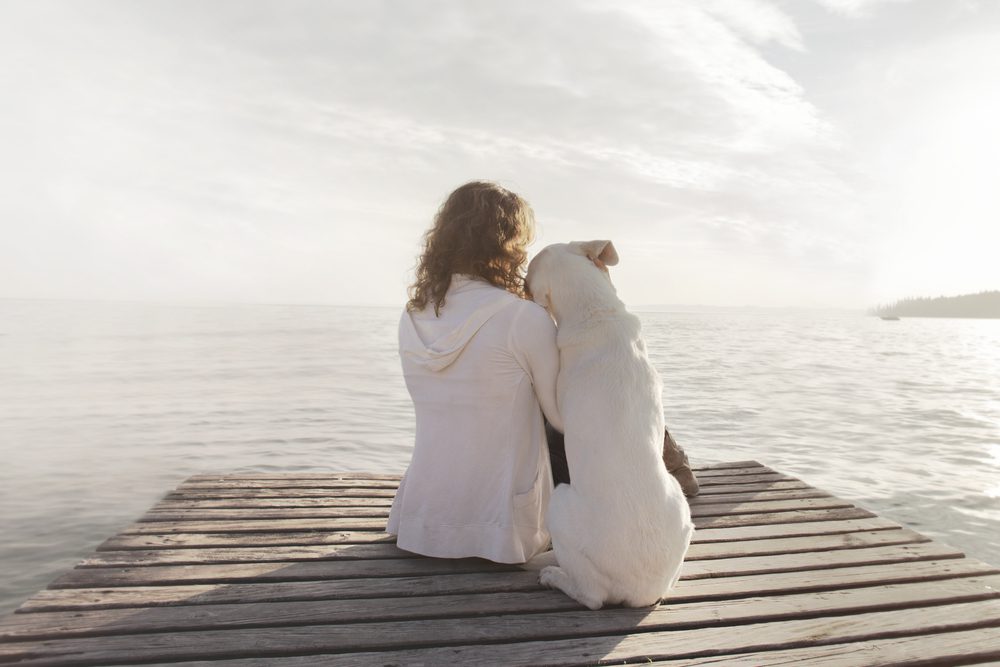Cataracts in Dogs: Stages, Causes, Treatments, And More

Table of Contents
If your dog’s eyes are looking opaque and blurry, chances are you are dealing with canine cataracts. In this article, we will talk about cataracts in dogs.
Cataracts, a.k.a cloudy lens, is a common condition in dogs, especially among certain breeds and in canine seniors. Keep reading to learn everything you need to know about this progressive eye condition.
What are Cataracts in Dogs?

According to Mark Bobofchak, DVM, DACVO, a veterinary ophthalmologist at Eye Care for Animals in Akron, Ohio, “cataracts are any cloudiness that develops within the natural lens of the eye.”
To understand cataracts in dogs, we need to explain the eye anatomy and physiology. Namely, the role of the lens is to properly focus light on the retina, which then absorbs the light and transfers it to the brain via the optic nerve.
The lens itself consists of water and proteins. Cataracts develop when the proteins start binding together, forming clumps or cloud-like formations. The more proteins join the clump, the more spread the clouding of the lens.
As a result of the newly formed protein complexes, the light cannot pass through the lens and reach the retina. This is the reason dogs with cataracts have impaired or blurry vision. As Dr. Mark says, dogs with cataracts can “still see lights and moving objects,” however, they likely “look like shadowy blurs.” To be more precise, looking through a lens with cataracts is pretty much like looking through a “heavily frosted window.”
What Causes Cataracts in Dogs?
Hereditary cataracts is the most common cause of cataracts in dogs. However, there are a number of other illnesses and risk factors that contribute to cataract formation.
Here is a list of the most common causes of cataracts in dogs:
- Genetics (hereditary cataracts)
- Eye injuries or trauma
- Pre-existing eye conditions
- Glaucoma
- Lens luxation
- Infections (uveitis)
- Progressive retinal atrophy
- Diabetes mellitus (sugar diabetes)
- Nutritional disorders or deficiencies
- Exposure to radiation, UV lights, and toxic chemicals
- Birth defects
- Cancer therapy treatments
Determining the underlying cause of cataracts in dogs is important because it affects the progression of the condition. For example, senile cataracts develops at a slower rate, while diabetes-related cataracts culminates in blindness in approximately 75% of dogs within one year of diagnosis.
Dog Breeds Prone to Cataracts
Basically, all dogs are at risk for developing cataracts as they age. However, the condition is much more likely to occur among certain breeds of dogs.
According to Kristen Gervais, DVM, MS, DACVO, a veterinary ophthalmology specialist, in some dogs, cataracts is “genetically programmed to occur.” The list of such breeds is listed below:
- Boston Terriers
- Miniature Poodles
- Labrador Retrievers
- Welsh Springer Spaniels
However, this does not mean that the breeds not listed are in the clear for cataracts. Also, it does not mean that all members of the listed breeds will develop cloudy lenses.
How to Tell Your Dog is Developing Cataracts

The most two most common signs that your dog is developing cataracts are pronounced clumsiness and sudden lens opacity.
Based on its characteristics, cataracts in dogs can be graded in four different stages, including:
- Incipient Cataracts – affects only 15% of the lens and does not cause vision issues
- Immature Cataracts – involves over 15% of the lens and triggers mild vision deficits
- Mature Cataracts – affect the entire retina and results in a near-blindness condition
- Hypermature Cataracts– triggers eye inflammation, uveitis, and lens capsule wrinkling
Cataracts are often misidentified for nuclear sclerosis – an age-related clouding of the dogs’ eyes. The signs and symptoms of cataracts and nuclear sclerosis are very similar, However, the good news is that veterinarians can easily differentiate them.
How to Care for a Dog with Cataracts
The care type and extent for dogs with cataracts depends on the condition’s progression and the treatment of choice. While dogs undergoing cataract surgery are expected to regain full vision, dogs that are not surgery candidates require lifelong use of medicated eye drops.
If the condition is progressed beyond repair and your dog’s vision is already damaged or lost, the good news is that dogs quickly adapt to the new situation. Namely, dogs that cannot see learn to rely on other senses. However, they still need extra love and support during the adaptation phase.
How do You Treat Cataracts in Dogs?
Based on the cataract progression and the dog’s overall eye health, the veterinarian will either prescribe eye drops or recommend cataract surgery.
Medicated Eye Drops for Dogs. Dogs with cataracts need daily application of eye drops with medications like anti-inflammatories and steroids. These medications cannot cure cataracts. However, they are essential for preventing cataracts’ consequences that can result in severe complications. For example, cataracts results in inflammation which may cause glaucoma.
Cataract Surgery for Dogs. The cataract surgery method is called phacoemulsification, and it includes ultrasonic emulsification of the damaged lens. Then the lens is aspirated and, based on the circumstances, replaced with a lens implant. Even if the vet does not place an artificial lens, the dog will still experience a significant improvement in its vision. However, it should be noted that this surgery is costly (over $3000 per eye).
What You Need to Know about Canine Cataract Surgery
Surgical correction is the most immediate and successful treatment option for cataracts in dogs. However, in addition to being expensive, cataract surgery is delicate and comes with a fair share of potential risks and considerations.
So, before signing your dog up for cataract surgery, consider the following complications:
- General Anesthesia. Undergoing general anesthesia is always a risk, even for healthy pets. Luckily, with the advancement in modern veterinary medicine, the risk is low but definitely worth mentioning.
- Intraocular Infections. Although intraocular infections are rare after cataract surgery, they can still happen. And in more severe cases, if left untreated, eye infections can result in vision impairments and blindness.
- Glaucoma. Occurs in approximately 30% of dogs that undergo cataract surgery, usually within the first 24 hours after surgery. Although temporary in nature, glaucoma requires adequate management.
- Permanent Blindness. Not every cataract surgery is successful. Complications like chronic inflammation in the eyes, glaucoma, and retinal detachment can result in permanent blindness.
Also, we should note that not every dog with cataracts is a good surgery candidate. Namely, surgical correction is not recommended for dogs with non-hereditary cataracts.
On the bright side, 95% of the dogs that qualify for surgery and undergo the procedure regain vision. The dog’s suitability for surgery is determined by a veterinary ophthalmologist based on two tests – ocular ultrasound and electroretinogram (ERG).
Our Final Thoughts on Cataracts in Dogs

If you believe your dog has cataracts or if it belongs to the high-risk breeds to developing cataracts, then it is important to monitor your dog closely, especially as he or she ages.
It is also important to find good pet health insurance to help cover the cost of surgery or whatever treatment option the veterinary ophthalmologist recommends for your dog.
Although there isn’t anything you can do to prevent cataracts in dogs, you can manage the condition if caught early and make sure your pup has a happy and healthy life.
















